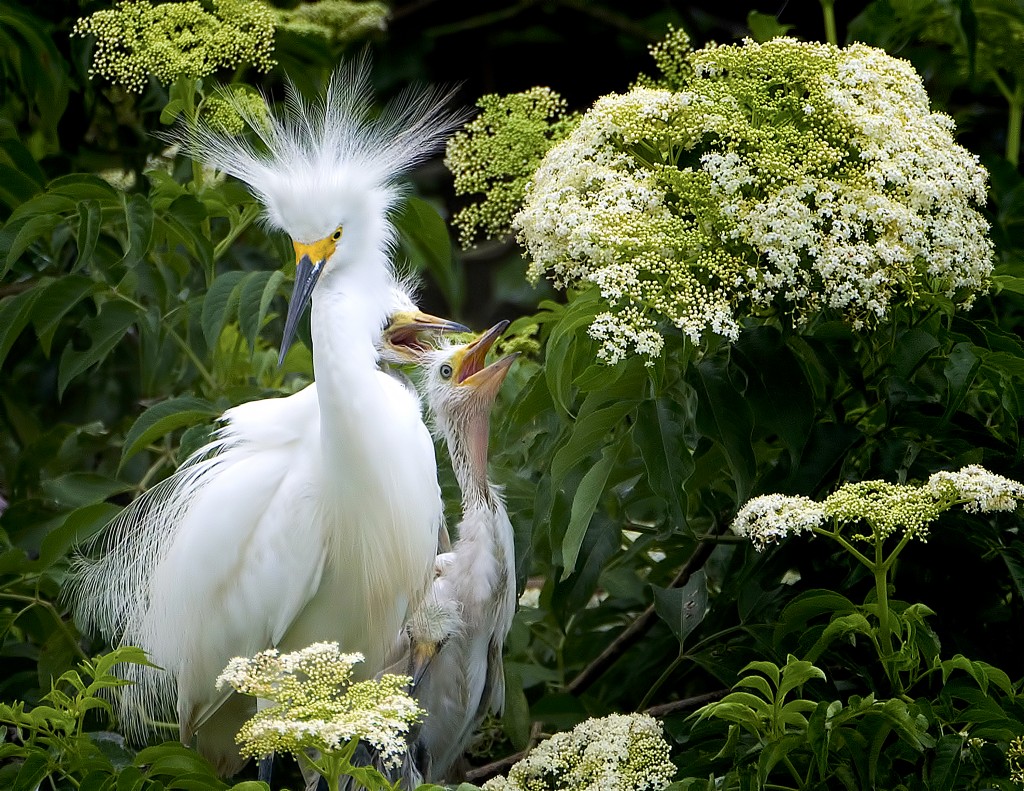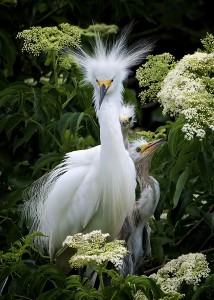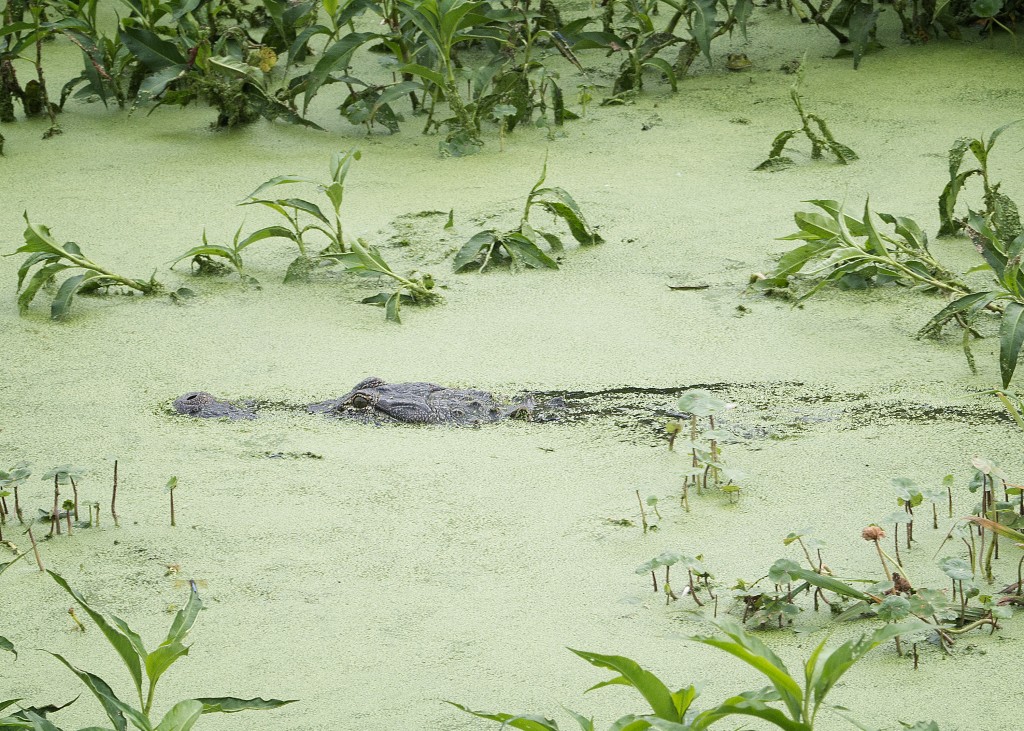
A snowy egret isn’t a rare bird. Nowhere along the Texas coast is this bird difficult to see. Snowy egrets are background birds.
Photographs of snowy egrets aren’t rare, either. Egrets are large, gregarious, and easy to see and photograph. New bird photographers, once they have disposed of the birds in the yard, often move to herons, egrets, and other long-legged waders.
The photograph of this common bird shown above isn’t an accident. The image is the product of the interpreter’s eye. An interpretive image differs from most in that it offers a number of different story lines to develop. An image of a snowy egret alone, stripped of any meaningful background, is a constricted platform. Yet, framed in this specific way, the snowy egret photograph can be used to explore the bird and its surroundings.
First, we could discuss the life history of the snowy egret. Notice the two hatchlings crouched behind the adult. This photograph is from a rookery, a colony where herons and egrets nest en masse. Rookeries are complex systems, with diverse members (herons, egrets, cormorants, anhingas) and predators such as the American alligator that I saw slithering through the duckweed underneath the trees.

Second, the flowering plant to the right of the birds is American elderberry (Sambucus canadensis). The photograph has been framed to include the elderberry flower. Elderberry fruit are used for jellies, jams, wine, and liquors. The stems of elderberries were once used as spigots for tapping sugar maples. An interpretive sign could just as easily focus on the elderberry as on the snowy egret.
Finally, the fact that the snowy egret isn’t rare is a story in itself. Admittedly, the snowy egret is one of the most common nesting birds in this rookery at High Island (no doubt the best known and most frequently visited rookery in Texas). Yet, in the late 1800s, this bird almost disappeared from Texas. Market shooting for the millinery trade decimated their populations in the U.S. By the late 1880s, over 5 million birds were being killed each year for their feathers.
President Theodore Roosevelt began protecting these birds and their rookeries when he established Pelican Island in Florida as the first wildlife refuge by executive order in 1903. Protection would be extended to Texas colonies in years to come. The fact that High Island is owned and managed by Houston Audubon Society is apropos given the importance of the original Audubon societies in bringing a halt to the trade.
The interpretive image is first seen through the interpreter’s eye. Interpretive photography is the skill of framing a subject in a way that invites an exploration of more than the subject itself. The stories that emanate from the background are often as important as the primary subject. The interpretive photographer crafts the image in a way that offers the interpreter a diversity of stories to tell and paths to travel.
